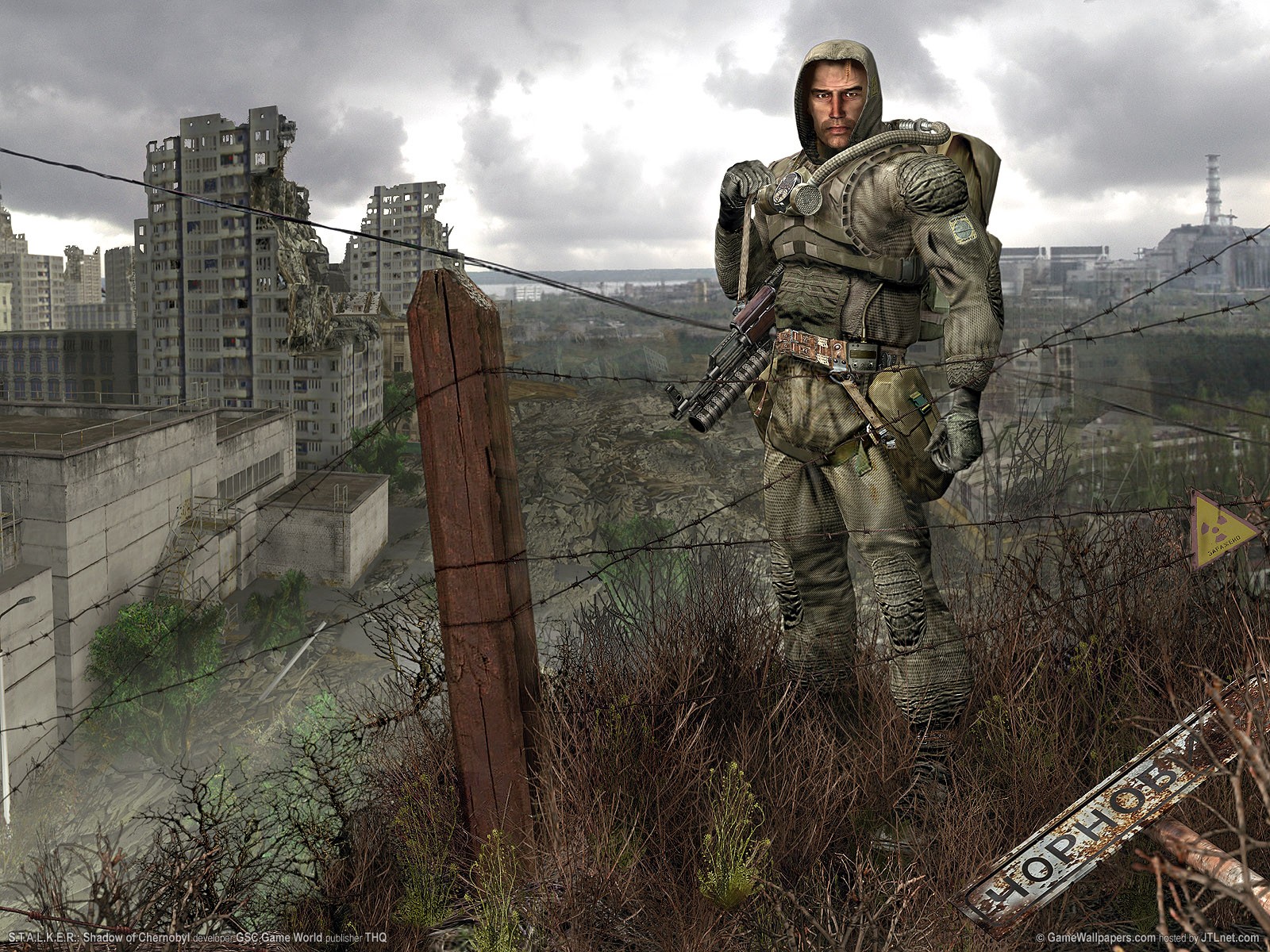
Posted on 09/06/2012 5:25:40 PM PDT by grundle
Twenty years ago today, reactor number four at the Chernobyl Nuclear Power Plant exploded. The blast covered vast areas of Belarus, Ukraine, and Russia with dangerous radioactive material.
The effects of the Chernobyl catastrophe are still being felt today—whole towns lie abandoned, and cancer rates in people living close to the affected areas are abnormally high.
But it turns out that the radioactive cloud may have a silver lining. Recent studies suggest that the 19-mile (30-kilometer) "exclusion zone" set up around the reactor has turned into a wildlife haven.

Image caption: A herd of Przewalski's horses roams Ukraine's Chernobyl "exclusion zone." These small horses were once found throughout the grassy plains of Mongolia, but hunting and habitat loss caused the species to go extinct in the wild. The lands near Chernobyl were blanketed by radiation two decades ago by the infamous nuclear reactor explosion. But a group of captive-bred horses released in the region in the 1990s, along with native wildlife, is now thriving there.
Roe deer bounce though the deserted houses while bats roost in the rafters (related photos: inside today's Chernobyl).
Plants and trees have sprung back to life, and rare species, such as lynx, Przewalski's horses, and eagle owls, are thriving where most humans fear to tread.
From Red to Green
The situation is a far cry from the way things looked just after the accident. Initially many animals died from the huge doses of radiation they received.
The red color of withered pine needles earned one large area near the reactor the name Red Forest.
"Now it is not the Red Forest but a real green forest, due to [growing] birch trees," said Sergey Gaschak from the International Radioecology Laboratory in Kiev, Ukraine.
And in the towns where humans have moved out, plants and animals seem to have moved in.
"Wild boar like to live in former villages, and I have found many birds' nests in the buildings," Gaschak said.
Even the site of the explosion seems to be bursting with life.
"I met a hare in the sarcophagus area, and birds nest there," said Gaschak, referring to the concrete and steel shell that encases the still smoldering reactor.
But while wildlife seems to be proliferating in the Chernobyl exclusion zone, not everyone is convinced that these plants and animals are healthy.
Anders Moller from the University of Pierre et Marie Curie in Paris, France, and Tim Mousseau from the University of South Carolina (USC) in Columbia have been studying Chernobyl's bird populations. Mousseau is a National Geographic Society grantee. (National Geographic News is part of the National Geographic Society.)
Moller and Mousseau have shown that certain species in the area have a higher rate of genetic abnormalities than normal.
"We find an elevated frequency of partial albinism in barn swallows, meaning they have tufts of white feathers," Mousseau said.
Late last year Moller and Mousseau published a paper in the Journal of Animal Ecology showing that reproductive rates and annual survival rates are much lower in the Chernobyl birds than in control populations.
"In Italy around 40 percent of the barn swallows return each year, whereas the annual survival rate is 15 percent or less for Chernobyl," Mousseau said.
Moller and Mousseau think that migratory species, such as the barn swallow, are particularly vulnerable to radioactive contaminants, because they arrive in the area exhausted and with depleted reserves of protective antioxidants due to their arduous journey.
The scientists are also concerned that the mutated birds will pass on their abnormal genes to the global population.
"In the worst case scenario these genetic mutations will spread out, and the species as a whole may experience enhanced levels of mutation," Mousseau said.
"Great Irony"
Mutation isn't the only adverse effect of the radiation. Working in the Red Forest area, James Morris, a USC biologist, has observed some trees with very strange twisted shapes.
The radiation, he says, is confusing the hormone signal that the trees use to determine which direction to grow.
"These trees are having a terrible time knowing which way is up," Morris said.
Gaschak, the Kiev ecologist, believes such radiation effects will diminish over time. He is celebrating the way that Chernobyl has burst into life and hopes that the area will become a national park one day.
But Mousseau is less optimistic. "One of the great ironies of this particular tragedy is that many animals are doing considerably better than when the humans were there," he said.
"But it would be a mistake to conclude they are doing better than in a control area. We just don't know what is normal [for Chernobyl]. There just haven't been enough scientific studies done."
They've turned Chernobyl into a legend with the combination of the fiction within the story "Roadside Picnic" and the STALKER movie.
It's turned into one of the most fascinating science fiction genres in modern times.

Hey, I know that guy!
An interesting film/documentary:”Inside Chernobyl (2012)”
http://www.youtube.com/watch?v=YfulqRdDbsg
Well, then, turn off the Democrat National Convention!
Thanks for the link.
“The scientists are also concerned that the mutated birds will pass on their abnormal genes to the global population.
“In the worst case scenario these genetic mutations will spread out, and the species as a whole may experience enhanced levels of mutation,” Mousseau said. “
How do you say MOTHRA in RUSSIAN ?
Disclaimer: Opinions posted on Free Republic are those of the individual posters and do not necessarily represent the opinion of Free Republic or its management. All materials posted herein are protected by copyright law and the exemption for fair use of copyrighted works.